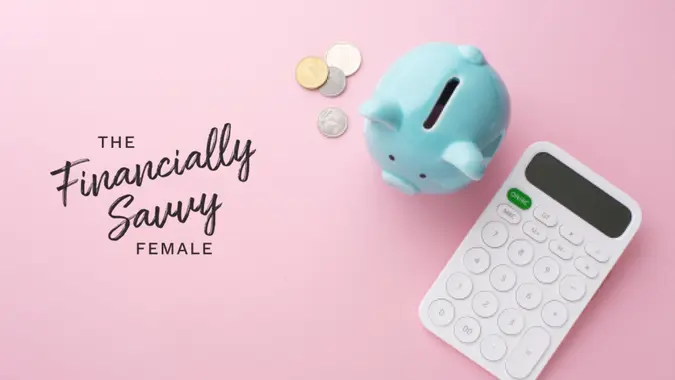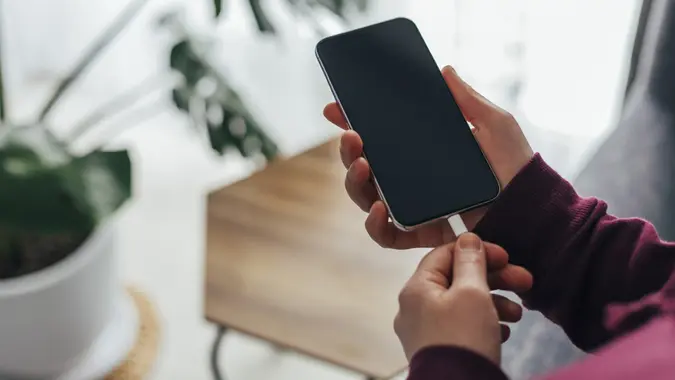How Rounding Up Your Purchases on Your Own Can Turn Pennies Into Dollars Without Using an App

Commitment to Our Readers
GOBankingRates' editorial team is committed to bringing you unbiased reviews and information. We use data-driven methodologies to evaluate financial products and services - our reviews and ratings are not influenced by advertisers. You can read more about our editorial guidelines and our products and services review methodology.

20 Years
Helping You Live Richer

Reviewed
by Experts

Trusted by
Millions of Readers
Rounding up the cost of your purchases to the next full dollar amount may seem like a way to make life more expensive. But it can actually be an easy way to automatically save and invest without feeling like much money is leaving your pocket.
The fundamental idea behind these “round-ups” has gained traction to the point that industry-leading apps like Acorns have more than 4.6 million paid subscribers. But do you really need to pay a fee for that service, or can you effectively do it on your own? And can setting aside pennies per purchase really amount to anything significant? Read on to learn more.
How Rounding Up Purchases Can Boost Your Investments
Rounding up the cost of purchases to the next dollar is a way to save money without really feeling like it is coming out of your pocket. After all, if you’re spending $100.23 at the grocery store, the 77 cents it takes to round it up to $101 will hardly be noticeable. But if you round up every single purchase you make, it can ultimately end up being a significant amount of money.
According to the Federal Reserve Bank of Atlanta, consumers made an average number of 45.6 payment transactions in October 2023. If those roughly 46 transactions made an average roundup of 50 cents, that would amount to $23 in savings per month, or $276 annually. While that may not seem like much, if you invested that $23 per month for 40 years and earned an average 10% return annually, you’d end up with about $145,000. Considering you likely didn’t even notice those few pennies you were setting aside with every transaction, that’s a sizable amount of money you can accumulate with little to no effort.
How Do Apps Like Acorns Work?
To use apps like Acorns, you’ll need to link your purchase cards, such as your debit or credit cards, to the app. Whenever you make a purchase, the cost is automatically rounded up to the next dollar amount. This “extra” amount is added to your investment account in the app. Generally, it is auto-invested into a portfolio of exchange-traded funds offered by the app and customized by each individual investor. All of this automation makes it very easy for investors to add money to their accounts without even thinking about it.
While the fundamental idea behind Acorns is solid, you’ll have to be careful about the fees you pay if you use the app. This is particularly true if you’re only working with a small amount of money, as the fees will be a much larger percentage of your contribution. For example, when you use the Acorns platform, you can choose from three levels of service: Bronze, Silver, or Gold. The fees for these options range from $3 to $12 per month. Imagine, as in the example above, that you’re an “average” consumer saving $23 per month in round-ups. If you’re paying an app $12 per month in fees, they will eat up more than half of your savings.
Bear in mind that Acorns does offer additional investment services beyond simple round-ups, and millions of customers love using the app. But each investor is an individual with specific investment needs and capital levels, and you’ll have to decide for yourself if an app is a value for you or not.
How You Can Round Up Your Own Purchases Without an App
There’s no denying that using an app to round up your purchases makes it extremely convenient. Once you’ve set up your account, the entire process is automated, eliminating the chance that emotion or “human error” will disrupt the process. But if you’re diligent, you may be able to achieve similar results without having to pay monthly fees that can drag down your returns.
One way is to review your transactions daily, weekly or monthly. Calculate your own round-up amounts by looking at each of your purchases. For example, if you spend $3.75 on coffee, $12.29 on lunch and $24.34 at the grocery store on a given day, you’ll “owe yourself” $1.62 in round-ups. Simply transfer that amount out of your checking account into your savings or investment account. Continue to do so at regular intervals.
Another option, which is less precise but more convenient, is to simply estimate your daily, weekly or monthly round-ups and have that amount automatically transferred into your investments. For example, if you review your accounts for a few months and find that you average 25 transactions per month, you could set up an auto-transfer of $12.50 per month into your investments. This amount can be adjusted upward or downward based on your specific spending patterns.
The bottom line is that whatever method allows you to consistently make deposits to your investment accounts — whether manually, automatically or by using an app — is the best one for you.
 Written by
Written by  Edited by
Edited by 

























